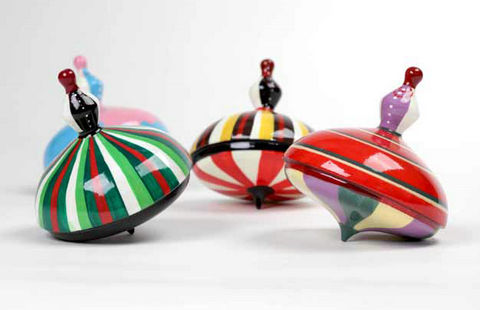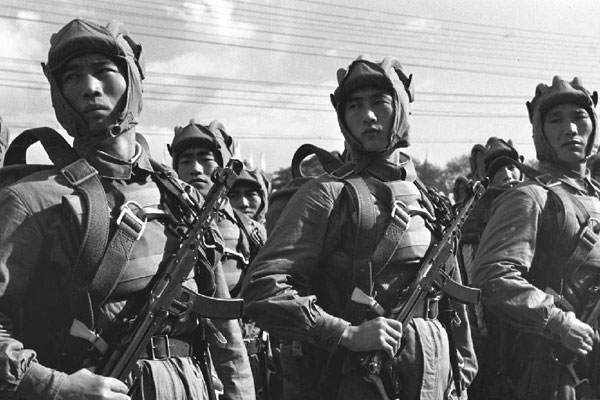American Rag Cie opens in China
Updated: 2015-08-01 01:10
By XU JUNQIAN in Shanghai(China Daily)
|
|||||||||
Though multi-brand boutiques have been sprouting up all over China throughout the past few years, the CEO of American Rag Cie China has boldly declared his company to be the “first mover” as the brand opened its flagship store in Shanghai in July.
“In terms of what we are doing, I think we are actually the first mover, if not a bit early,” said American Rag Cie China CEO Peter Caplowe.
“What we are doing is a multi-brand store offering international brands at affordable to premium price points. In fact, we don’t really see a head-to-head competitor in the Chinese market at the moment,” added Caplowe, a veteran in the fashion industry with rich experience in the Asian markets.
The Brit was also the person who discovered Evisu in 1994 before developing it into a global denim brand and raking in over $100 million in sales.
Caplowe believes that China’s booming middle class is becoming “the most interesting and curious consumer group on the planet”, claiming that big names like Louis Vuitton and Gucci have started to bore shoppers. Moreover, he promises that American Rag Cie will be “a place for everybody” that offers a friendlier atmosphere compared to upscale establishments.
Offerings at the store start from 10 yuan ($1.60) for postcards and up to a whopping 30,000-yuan for a designer denim jacket. The average price points of its offerings would be jeans priced around 1,200 yuan a pair.
“The customers we are targeting are very much the next generation customers, or those born after the 1980’s and 90’s,” said Caplowe, who added that places like Lane Crawford can be too intimidating for some customers.
This flagship American Rag Cie store also marks the commencement of a frenetic expansion across China. Caplowe is planning to open 30 to 40 stores within two years.
A report released by real estate consultancy RET in September 2014 revealed that among the 200 or so multi-brand stores in China, more than 80 percent of them are founded and operated by domestic and Hong Kong companies.
While vintage clothing and denim serve as the two major pillars of the Los-Angeles-based store, Caplowe said they would slightly tune down the percentage of the two categories for their flagship store in Shanghai.
“We’ll experiment bringing in some vintage clothing, very collectible ones, rather than just some ‘dead people’s clothes’,” he joked, making a reference to what most Chinese people say about clothes that are not fresh from the factory’s production line.
Denim apparel would account for approximately 40 percent of the store’s offerings, while collectible vintage ones would be less around 1 to 2 percent.
Caplowe said he discovered that there is a shortage of multi-brand stores — especially those that aren’t so intimidating and inaccessible to the masses — in China not because customers here prefer to shop from single-brand stores, but because of the high cost and difficulties in running a multi-brand business.
It took Caplowe and his team about 18 months to work out a business model and the logistical requirements, and he said the latter is one of the hardest problems to solve. The Hong-Kong-based entrepreneur also believes that the traditional model of an international brand opening their first store in Hong Kong as “water-tester” or “gateway to the mainland” no longer works, as rental prices have been too high.
“We are very confident that Chinese consumers want a wide choice of brands just as much as any other consumers in the world. If you want to succeed in China now, it’s best to start in Shanghai, or Beijing,” he said.
xujunqian@chinadaily.com.cn
- Gala promotes gender equality
- Trafficked woman appeals to be left alone, continue her life
- Wreckage discovery shouldn't disrupt search: MH370 families
- 3,000 students attend pre-exam session in huge hall
- 38.7b yuan in State assets recovered in campaign
- China closely watches recovery of Boeing debris: spokesman

 Top 10 international destinations for Chinese millionaires
Top 10 international destinations for Chinese millionaires
 Rainstorm affects 940,000 in South China
Rainstorm affects 940,000 in South China
 Do you take all your paid leave?
Do you take all your paid leave?
 National Art Museum of China displays Polish folk art
National Art Museum of China displays Polish folk art
 Chinese soldiers in parades
Chinese soldiers in parades
 US Marines Corpos soldiers demonstrate martial arts
US Marines Corpos soldiers demonstrate martial arts
 World's largest radio telescope being built
World's largest radio telescope being built Elvis Festival pays tribute to the King of Rock 'n' Roll
Elvis Festival pays tribute to the King of Rock 'n' Roll
Most Viewed
Editor's Picks

|

|

|

|

|

|
Today's Top News
Professor accused of spying out on bond
Chinese defense concerned about US moves in South China Sea
Chinese named in test-taking scam deported from US
Baidu to buy back shares worth $1b
Former military leader Guo Boxiong expelled from CPC, to face justice
Pair to face poaching charges related to death of popular lion
Amazon wants air space for delivery drones
Embassy continues its work in aftermath of car bombing
US Weekly

|

|







